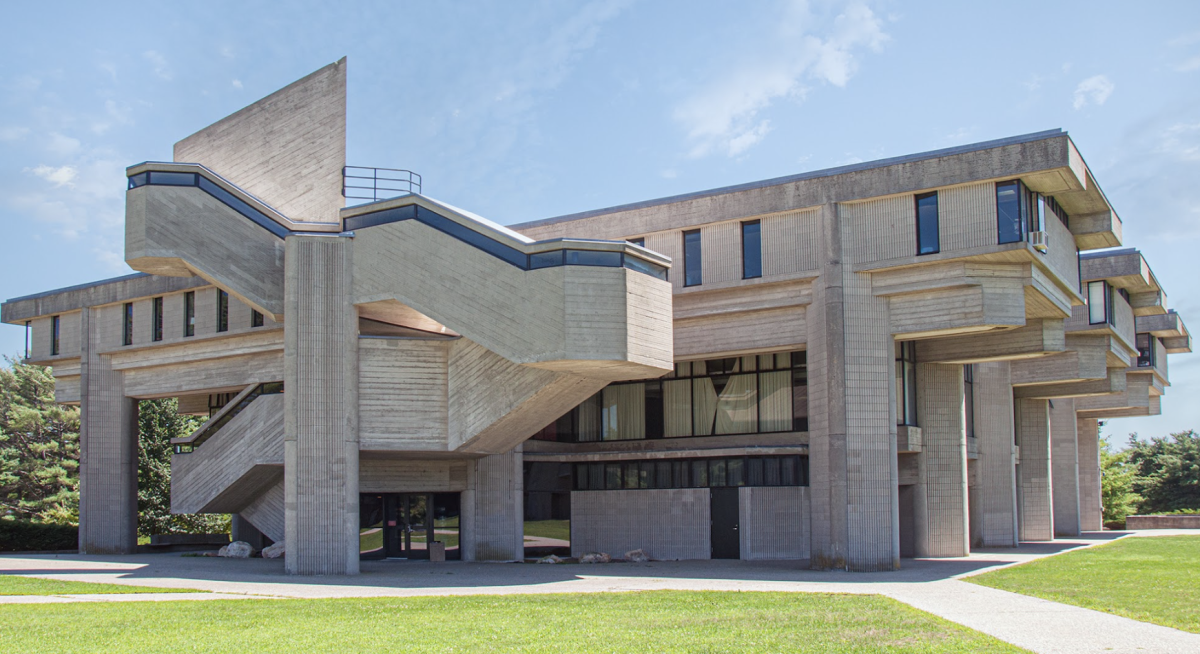When I was looking at colleges, the biggest draw for me was the environment and feel of the school. Similar to the saying ‘you are judged by the company you keep’, the environment of your campus can dictate how you feel and act within it.
Before Thanksgiving, the Humanities Institute hosted a Come Friday Forum on the topic of “What Should a College Campus Look Like and Why?” This is an interesting question and one that every college student and employee should consider when seeking out a university and/or maintaining one.
A 2020 study conducted by The Harris Poll placed pictures of American federal buildings side by side to compare classical-style architecture to modern architecture. They asked more than 2,000 Americans of differing demographics, “Which of these two buildings would you prefer for a U.S. courthouse or federal office building?” Overall, classical was favored 72% to 28%. I think there is a lesson here for college architecture.
I am of the opinion that a classical or traditional architectural theme with original buildings adds more integrity to the school. I believe that the older style of buildings helps to create an environment rooted in the beauty of learning, and students may hold it in higher esteem. On a more frivolous note, modern architecture can create a vibe that is no different from a city or even a prison. Students may have a different attitude of respect towards their school if it looks no different than a city. It is easier to litter on a campus that does not differentiate itself from everyday life.
Brutalism is the style of architecture that started moving its way onto campuses in the 1950s following World War II. This style incorporates unfinished concrete as well as striking geometrical shapes and silhouettes. Brutalism rejects nostalgia and reflects modern architecture on steroids. There is little charm in these designs.
UMass Dartmouth is one of the worst examples of brutalism college architecture. Their website has a featured page on their website dedicated to the architecture of their school. “Our architecture, with its spiraling geometric forms, massive cantilevers, and sculptural elements… we don’t look like everyone else… we’re not like everyone else. We are a purposeful community of diverse, forward-thinking innovators. Our campus creates a unique sense of place that sets the stage for the creative thinking and groundbreaking research that could only happen here.”
This statement, designed for marketing purposes, emphasizes UMass Dartmouth’s “unique” buildings that lend themselves to creating innovators. My distaste for this promotion is not only because I find modern and brutalist architecture grueling but the emphasis on being unique seems artificial. Being “unique” is no determinant if something is genuinely worthwhile.
In addition to more traditional buildings, a college campus should be walkable. Not only does it make a school more affordable, but it allows for an emphasis on the beauty of nature and the buildings within the grounds. Sch If a student is focused on transportation and getting somewhere quickly, that is all they will ever see. Walking encourages students to engage with their peers. I walk every other day to class with a friend I might never have gotten close to if it were not for the time we spend together on the way to class.
College campuses should have common spaces both indoors and outdoors. College courtyards, or quads, are often the symbol of the campus and largely what comes to mind when thinking of a particular school. For us at Saint Anselm College, Alumni Hall acts as this main iconic demonstration of the majesty of our school. Quads should be sizeable and act as a gathering place and an event space.
One issue that many colleges have is being too focused on the architectural layout and not mixing buildings in with nature. Having trees on campus adds to the visual appeal and helps to make the college seem less daunting for many. Including paths and benches to appreciate the natural appeal of the campus is vital to give students the opportunity to see their school as a second home and not just a place to learn.
College is the stepping stone for young adults to learn how to be independent and take that first leap away from home. Therefore, a campus should feel cozy and emphasize the humility and beauty of its environment.


